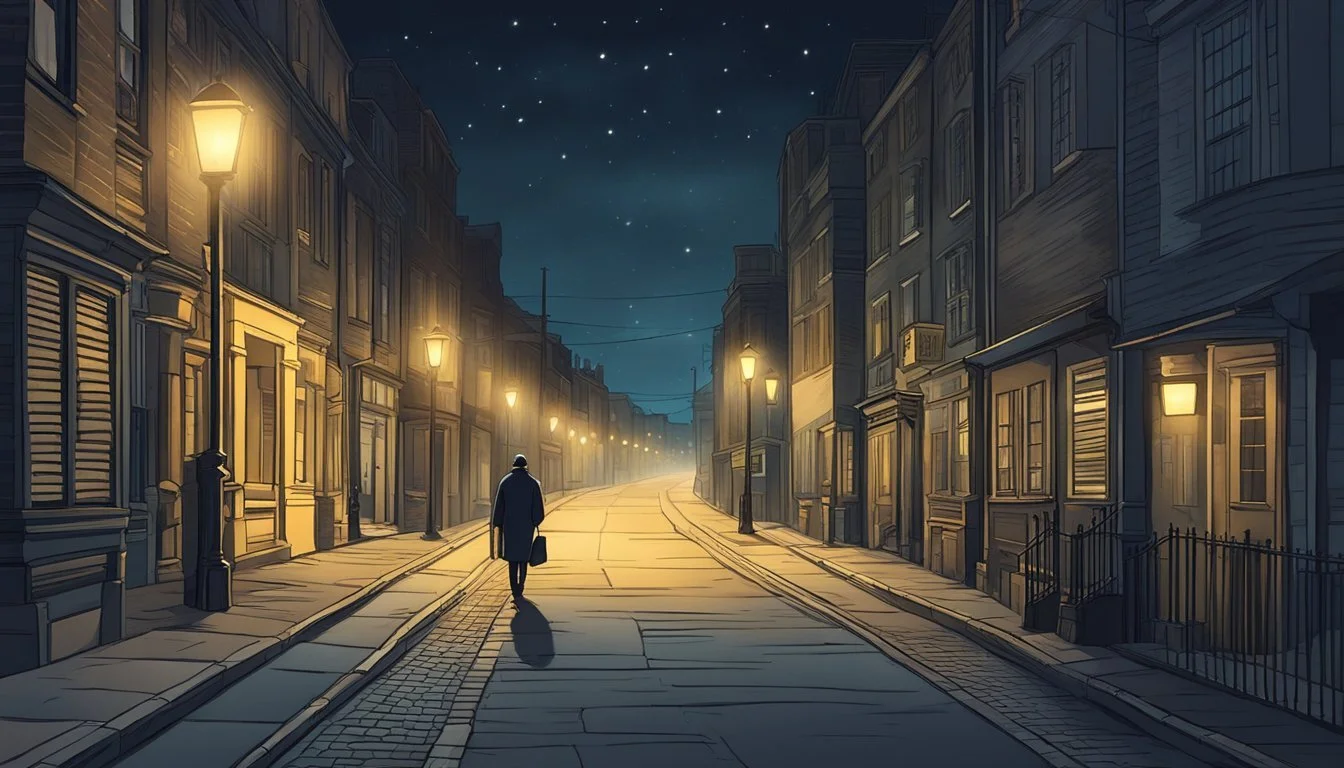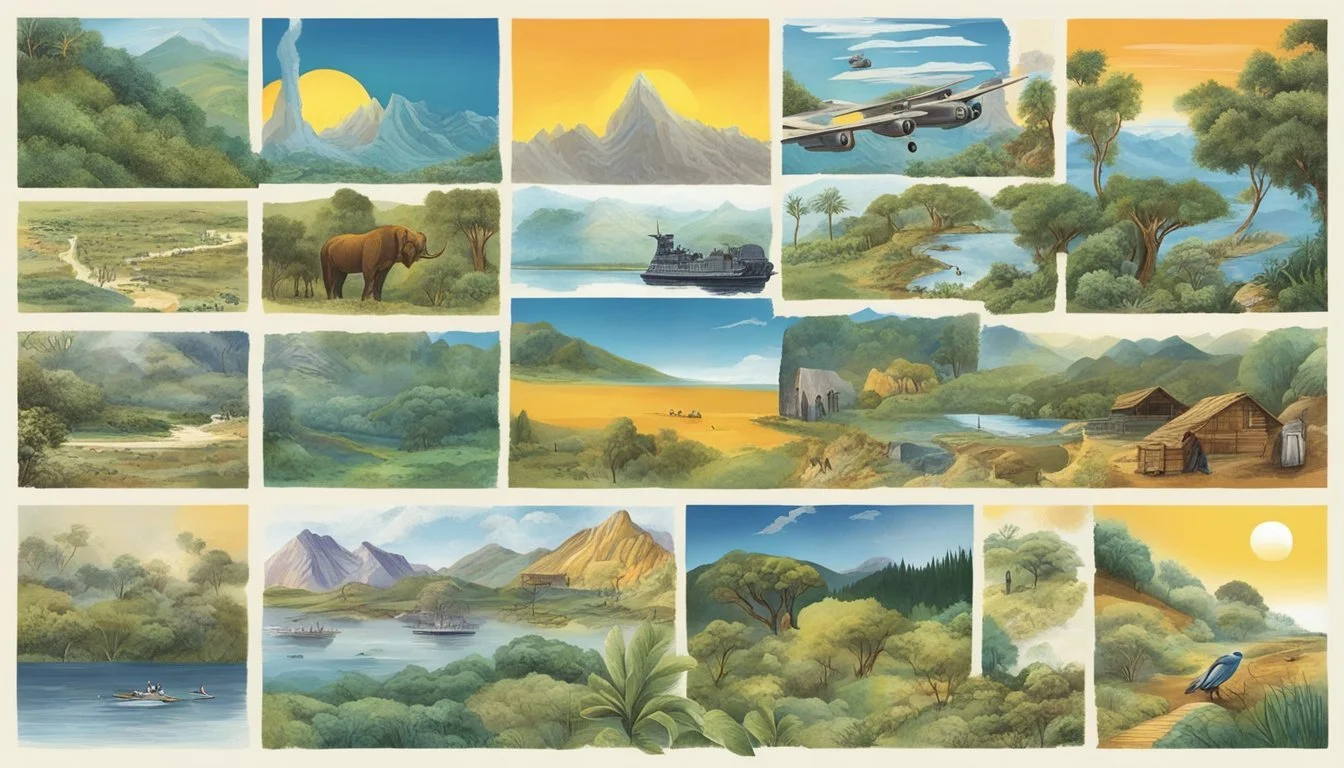Top Documentaries of 1998
Essential Viewing from a Landmark Year
The year 1998 was a notable one for documentary filmmaking, with several impactful and thought-provoking works released. These films covered a wide range of subjects, from social issues to personal stories, and left lasting impressions on audiences and critics alike.
Some of the top documentaries from 1998 explored complex themes and shed light on important topics of the time. These works not only entertained viewers but also educated and inspired them, showcasing the power of non-fiction storytelling in cinema. The documentaries of 1998 continue to be remembered and discussed by film enthusiasts and historians, highlighting their enduring significance in the genre.
1) The Cruise (1998)
"The Cruise" is a captivating documentary that offers a unique perspective on New York City through the eyes of tour guide Timothy "Speed" Levitch. Directed by Bennett Miller, this 76-minute film marks his directorial debut.
The documentary showcases Levitch's eccentric personality and unconventional narrative style as he leads bus tours around Manhattan. His rapid-fire delivery and distinctive worldview provide a fresh take on the city's landmarks and history.
Miller's film captures Levitch's passion for New York and his philosophical musings on life, architecture, and human nature. The tour guide's offbeat observations and poetic descriptions transform familiar sights into extraordinary experiences.
"The Cruise" garnered critical acclaim for its intimate portrayal of Levitch and its ability to make viewers see New York City in a new light. The documentary's success helped launch Miller's career as a filmmaker.
More information on The Cruise (1998)
2) The Farm: Angola, USA (1998)
The Farm: Angola, USA offers a raw glimpse into life at Louisiana State Penitentiary, America's largest maximum-security prison. Directed by Jonathan Stack and Liz Garbus, this documentary follows six inmates as they navigate their harsh reality.
The film explores themes of justice, redemption, and the human spirit through intimate portraits of prisoners facing various sentences. It captures the daily routines, struggles, and rare moments of hope within Angola's confines.
Wilbert Rideau, a life prisoner and editor of the prison magazine The Angolite, contributes to the film's authentic perspective. His involvement adds depth to the narrative, providing insights from someone intimately familiar with Angola's inner workings.
The documentary received critical acclaim for its unflinching portrayal of prison life. It earned an Academy Award nomination and won multiple Emmy Awards, cementing its place as a significant work in the genre.
By presenting unfiltered accounts from both inmates and guards, The Farm: Angola, USA challenges viewers to confront complex issues surrounding the American penal system.
3) The Last Days
"The Last Days" (1998) is a powerful Holocaust documentary directed by James Moll. It focuses on the experiences of five Hungarian Jews who survived the Nazi regime's final push to exterminate European Jewry.
The film provides a haunting look at the closing months of World War II, when Nazi Germany devoted significant resources to deporting and killing Jews in Hungary. It features firsthand accounts from survivors, offering intimate and personal perspectives on this dark chapter of history.
Executive produced by Steven Spielberg through his Shoah Foundation, "The Last Days" combines survivor testimonies with archival footage and photographs. This approach creates a vivid and emotionally impactful portrayal of the Holocaust's final stages.
The documentary received critical acclaim and won the Academy Award for Best Documentary Feature in 1999. It was praised for its unflinching examination of human suffering and resilience in the face of unimaginable cruelty.
"The Last Days" stands as a vital historical record, preserving the voices of Holocaust survivors for future generations. It serves as a poignant reminder of the atrocities committed during this period and the importance of bearing witness to history.
4) Fast, Cheap & Out of Control
Errol Morris directed this innovative documentary in 1997, exploring the lives and passions of four unique individuals. The film weaves together interviews with a robot scientist, a topiary gardener, a lion tamer, and a mole rat expert.
Morris employed his invented "Interrotron" camera technique, allowing subjects to make eye contact with both the interviewer and audience simultaneously. This creates an intimate connection between the viewer and the eccentric characters on screen.
The documentary's structure is unconventional, blending the four seemingly unrelated stories into a cohesive exploration of human obsession and the nature of control. Morris uses a mix of interview footage, archival clips, and stylized visuals to craft a compelling narrative.
Fast, Cheap & Out of Control received critical acclaim for its artistic approach to documentary filmmaking. It challenges traditional documentary conventions, offering a thought-provoking look at the intersection of human ambition, technology, and nature.
The film's title reflects the unpredictable and sometimes chaotic nature of its subjects' pursuits, as well as Morris's experimental approach to storytelling. It stands as a prime example of Morris's ability to find profound meaning in unexpected places.
More information on Fast, Cheap & Out of Control (1997)
5) The Big One
"The Big One" (1997) is a documentary film directed by Michael Moore. It follows Moore on his book tour for "Downsize This!" across the United States.
The film explores economic issues facing American workers in the late 1990s. Moore visits 47 towns, uncovering stories of factory closures and job losses.
Through interviews and confrontations with corporate executives, Moore highlights the disconnect between company profits and employee well-being. He addresses themes of corporate downsizing and the outsourcing of jobs overseas.
"The Big One" received critical acclaim for its blend of humor and social commentary. It won the Best Documentary award from the Boston Society of Film Critics in 1998.
The documentary showcases Moore's trademark style of activism through filmmaking. It combines personal anecdotes with broader economic analysis to create a compelling narrative.
More information on "The Big One"
6) Dear Jesse
"Dear Jesse" (1998) is a thought-provoking documentary directed by Tim Kirkman. The film explores the complex relationship between the filmmaker and Senator Jesse Helms of North Carolina.
Kirkman, an openly gay man, uses a first-person narrative style to examine the similarities and differences between himself and the conservative politician. The documentary is structured as a letter to Senator Helms, known for his anti-gay stance.
The film delves into themes of identity, politics, and personal history. Kirkman returns to his home state of North Carolina to investigate the parallels in their backgrounds, despite their opposing views on social issues.
"Dear Jesse" received critical acclaim for its unique approach and personal touch. It offers a nuanced look at the political landscape of the late 1990s and the ongoing struggle for LGBTQ+ rights in America.
The documentary provides viewers with an intimate portrait of both Kirkman and Helms, encouraging reflection on the nature of prejudice and the possibility of finding common ground across ideological divides.
More information on "Dear Jesse"
7) The Apple (1998)
"The Apple" is a thought-provoking documentary directed by Samira Makhmalbaf. It explores the true story of two young Iranian sisters who were kept isolated in their home for 12 years.
The film follows the girls as they experience the outside world for the first time. It raises questions about societal norms, family dynamics, and personal freedom in Iran.
Makhmalbaf's observational style captures the sisters' journey of discovery with sensitivity and insight. The documentary blends elements of reality and reconstruction to tell its compelling story.
"The Apple" received critical acclaim for its unique approach and powerful subject matter. It premiered at the 1998 Cannes Film Festival, where it garnered international attention.
The film's impact extends beyond its artistic merit, shedding light on issues of gender and individual rights in Iranian society. It remains a significant work in the landscape of 1990s documentary filmmaking.
More information on "The Apple" (IMDb)
8) Out of the Present
Out of the Present (1998) is a unique documentary that offers a rare glimpse into space exploration from a cosmonaut's perspective. Directed by Andrei Ujica, the film follows Soviet cosmonaut Sergei Krikalev's experiences aboard the Mir space station.
Krikalev's mission coincided with the collapse of the Soviet Union, adding a fascinating geopolitical backdrop to the space narrative. The documentary captures the surreal situation of an astronaut observing major world events from orbit.
Ujica combines footage shot in space with archival material to create a compelling visual narrative. The film provides stunning views of Earth from space and intimate moments of life aboard the Mir station.
Out of the Present offers a meditation on the nature of time and human perception. It contrasts the slow, methodical pace of space missions with the rapid political changes occurring on Earth below.
The documentary received critical acclaim for its unique perspective and thought-provoking approach to space exploration. It remains a standout film in the genre of space documentaries.
More information on Out of the Present
9) 13th Street Requiem (1998)
13th Street Requiem is a haunting documentary that explores the lives of residents in a troubled Philadelphia neighborhood. The film paints an intimate portrait of a community struggling with poverty, crime, and neglect.
Director Marc Singer spent months living on 13th Street to capture authentic footage. His black-and-white cinematography lends a gritty realism to the film's depiction of urban decay.
The documentary follows several memorable characters as they navigate daily life on 13th Street. It offers an unflinching look at drug addiction, homelessness, and violence without passing judgment.
Despite the bleak subject matter, moments of humanity and resilience shine through. The film finds glimmers of hope amidst the harsh realities of inner-city life.
13th Street Requiem received critical acclaim for its raw, unvarnished portrayal of urban poverty in America. It serves as a powerful time capsule of late 1990s Philadelphia.
More information on 13th Street Requiem
10) Regret to Inform (1998)
Regret to Inform is a powerful documentary directed by Barbara Sonneborn. The film explores the devastating impact of the Vietnam War on widows from both sides of the conflict.
Sonneborn, herself a war widow, embarks on a personal journey to Vietnam 20 years after her husband's death. She interviews American and Vietnamese women who lost their husbands during the war.
The documentary offers a unique perspective on the long-lasting effects of war. It focuses on the shared experiences of grief and loss among women from opposing sides.
Regret to Inform received critical acclaim for its emotional depth and compassionate approach. The film was nominated for an Academy Award for Best Documentary Feature.
It also won a Peabody Award in 2000 after airing on PBS. The documentary's production spanned a decade, allowing for a thorough exploration of its subject matter.
Impact of 1998 Documentaries
The documentaries of 1998 left an indelible mark on the film industry and society at large. They pushed boundaries in storytelling techniques and shed light on important social issues, while also embracing new technologies that would shape the future of documentary filmmaking.
Cultural Significance
1998 documentaries tackled pressing social topics, sparking public discourse and raising awareness. "The Last Days," produced by Steven Spielberg, explored the experiences of Hungarian Jews during the Holocaust, winning an Academy Award for Best Documentary Feature. "Wild Man Blues" offered an intimate look at Woody Allen's jazz tour, revealing a different side of the controversial filmmaker.
"The Farm: Angola, USA" exposed the harsh realities of America's prison system, prompting discussions on criminal justice reform. These films challenged viewers' perspectives and encouraged critical thinking about complex issues.
Technological Advancements
1998 marked a turning point in documentary production techniques. Digital video cameras became more accessible, allowing filmmakers to capture footage with greater flexibility and lower costs. This democratization of technology led to an increase in independent documentaries and experimental storytelling approaches.
Editing software advancements enabled more sophisticated post-production work, enhancing the visual appeal of documentaries. The integration of archival footage and re-enactments became more seamless, blurring the lines between fact and dramatization.
These technological shifts laid the groundwork for the documentary boom of the early 2000s, paving the way for more diverse voices and innovative storytelling methods in the genre.
Influential Directors and Producers
Several documentary filmmakers made significant contributions to the genre in 1998. Their works explored diverse subjects and pushed the boundaries of documentary storytelling.
Notable Collaborations
Errol Morris teamed up with producer Michael Williams-Jones for "Fast, Cheap & Out of Control." The film interweaved four seemingly unrelated stories, showcasing Morris's unique interviewing style.
Ken Burns partnered with Lynn Novick on "Frank Lloyd Wright," a two-part PBS documentary. It offered an in-depth look at the famed architect's life and work.
Barbara Kopple collaborated with Cecilia Peck on "Wild Man Blues," following Woody Allen's jazz band tour in Europe. The film provided rare insights into Allen's off-screen persona.
Career Milestones
Michael Moore's "The Big One" marked a turning point in his career. The film critiqued corporate America and solidified Moore's reputation as a provocative documentarian.
Steve James, known for "Hoop Dreams," released "The War Zone." This powerful documentary examined the impact of gang violence in Chicago.
Werner Herzog's "Little Dieter Needs to Fly" showcased his ability to blend fact and fiction. The film recounted the story of a Vietnam War pilot's escape from captivity.
Frederick Wiseman's "Public Housing" continued his observational style. It offered a nuanced look at a Chicago housing project, further cementing Wiseman's status as a master of cinéma vérité.
Evolution of Documentary Styles
Documentary filmmaking has undergone significant changes since its inception in the early 20th century. The first recognized documentary, "Nanook of the North" (1922), established a foundation for the genre.
As technology advanced, so did documentary techniques. The introduction of synchronized sound in the late 1920s allowed filmmakers to capture real-time interviews and ambient sounds, enhancing authenticity.
In the 1960s, the cinéma vérité movement emerged, emphasizing unscripted footage and minimal intervention from the filmmaker. This style aimed to present a raw, unfiltered view of reality.
The 1970s and 1980s saw a rise in politically charged documentaries, tackling social issues and challenging the status quo. Filmmakers began incorporating more personal perspectives and creative storytelling techniques.
By the 1990s, documentaries started blending different styles. They incorporated reenactments, animation, and archival footage to create more engaging narratives.
The digital revolution of the 2000s democratized documentary production. Low-cost equipment and online platforms allowed independent filmmakers to reach wider audiences.
Today, documentary styles continue to evolve. Immersive technologies like virtual reality offer new ways to engage viewers. Streaming services have also increased demand for diverse documentary content, fostering experimentation with form and structure.










